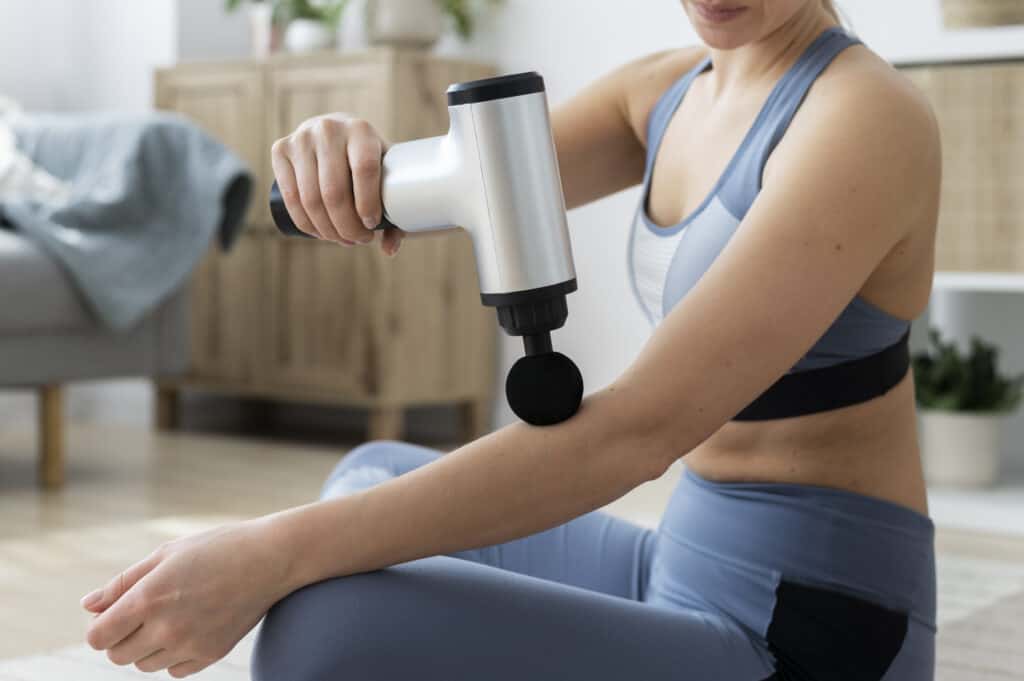Forearm strength is critical for grip, stability, and performance in both daily activities and fitness. Building forearm strength requires knowledge of the forearm’s muscle structure and strategic exercise choices. In this guide, we’ll look at the muscle groups involved, top exercises, exercise intensity tips, and what it means if your forearms feel weak days after weightlifting.
Understanding the Forearm Muscles
The forearms contain several muscles responsible for movements of the wrist, fingers, and thumb. These can be divided into two main groups:
- Flexors (Anterior Compartment): Located on the inner side of the forearm, these muscles are involved in flexing the wrist and fingers. Major flexor muscles include the flexor carpi radialis, flexor carpi ulnaris, and flexor digitorum superficialis.
- Extensors (Posterior Compartment): Found on the outer forearm, these muscles extend the wrist and fingers. Key extensors include the extensor carpi radialis longus, extensor carpi radialis brevis, and extensor digitorum.
These muscles work together to support gripping and lifting, making them crucial for activities ranging from weightlifting to rock climbing.
Best Exercises for Forearm Strength
Focusing on exercises that engage both the flexors and extensors helps build balanced forearm strength. Keep in mind, also, that forearm muscles are already stressed as part of a typical workout. Here are some of the best exercises:
- Wrist Curls (Flexors)
Seated Wrist Curls: Sit on a bench and hold a barbell or dumbbells with your palms facing up. Rest your forearms on your thighs and let your wrists hang over the edge. Curl the weights up by flexing your wrists, then lower slowly. - Reverse Wrist Curls (Extensors)
Similar to wrist curls, this exercise targets the extensors. Hold the weights with palms facing down, and curl them up by extending the wrists. Perform this exercise to balance strength in the wrist extensors. - Farmer’s Walk (Grip)
Farmer’s walks work the forearm muscles isometrically. Hold a heavy dumbbell or kettlebell in each hand and walk a set distance while maintaining an upright posture. This exercise enhances grip endurance and strength. - Hammer Curls (Brachioradialis)
Unlike standard curls, hammer curls involve a neutral grip, activate the brachioradialis muscle in the forearm. Stand or sit and hold dumbbells with your palms facing each other. Curl the weights up, focusing on the forearm contraction. - Finger Curls (Finger Flexors)
For enhanced finger strength, use a barbell or dumbbells. Start with your palms up, and let the bar roll down to your fingertips. Curl your fingers to grip the bar tightly and squeeze, working the finger flexors intensively. - Wrist Roller (Comprehensive Forearm)
The wrist roller is an excellent way to build endurance and strength across the forearm muscles. Holding the wrist roller straight out, twist it to roll up a weight attached by a rope. This action activates both flexor and extensor muscles.
Exercise Intensity: Heavy vs. Light Weights for Forearms
Choosing the right intensity for forearm training depends on your goals:
- Heavy Weight, Low Reps (4-6 reps): If you aim to build raw strength in the forearms, heavier weights with lower repetitions can be effective. However, since forearm muscles are smaller, they can fatigue easily. Limit heavy training to 2-3 times a week, giving adequate rest between sessions.
- Light Weight, High Reps (15-20 reps): For endurance and better grip stamina, lighter weights with more repetitions are ideal. High-rep training also helps in hypertrophy (muscle growth), which can improve the overall size and endurance of the forearms. Light-weight exercises can be performed more frequently, about 3-4 times weekly.
Incorporate both heavy and light sets in your routine to benefit from strength and endurance training. For instance, you might start with heavier wrist curls for a few sets and finish with high-rep wrist rollers for a balanced workout.
Delayed-Onset Muscle Soreness (DOMS) in Forearms: What to Expect
If your forearms feel sore or weak for several days after weightlifting, this is likely due to delayed-onset muscle soreness (DOMS). This condition happens when muscles are challenged by new exercises or intense resistance, causing microscopic tears in the muscle fibers, which then rebuild stronger during recovery.
Soreness lasting a day or two is normal, but extended weakness (three days or more) could indicate overuse or insufficient recovery time. Here are ways to help manage DOMS in the forearms:
- Proper Warm-Up: Engage in light dynamic exercises for the wrists and forearms before intense training to improve blood flow and prepare the muscles for stress.
- Progressive Overload: Gradually increase weight and intensity to prevent overstressing the muscles, allowing them to adapt safely.
- Stretching and Massage: Gentle stretches and self-massage can help alleviate stiffness and soreness. Consider using a foam roller or massage ball on your forearms to increase blood flow and promote recovery.

Conclusion: Building Strong, Resilient Forearms
Training forearms isn’t just for aesthetics—strong forearms improve grip, enhance wrist stability, and boost overall functional strength. Focusing on exercises that target both flexors and extensors, using a mix of heavy and light intensity, will yield the best results. Remember, soreness can be part of progress, but ensure adequate rest for recovery and avoid overtraining. Strengthening the forearms will take time and consistency, so incorporate these exercises into your regular fitness routine for balanced gains.
References
- Schöffl, V., et al. (2011). Evaluation of physiological demands and exercise prescription in rock climbing. British Journal of Sports Medicine, 45(4): 289-295.
- Schoenfeld, B. J., et al. (2014). Effects of different resistance training frequencies on muscle strength and hypertrophy. Journal of Strength and Conditioning Research, 28(7): 1955-1965.
- Proske, U., & Morgan, D. L. (2001). Muscle damage from eccentric exercise: mechanism, mechanical signs, adaptation and clinical applications. The Journal of Physiology, 537(2): 333-345.
Stay Strong Together
If you’re serious about nutrition, building muscle and reaching your fitness goals, the Jefit app is the perfect tool to help get you there. With over 20 million downloads and more than 12 million bodybuilders using the app to track their workouts, Jefit is the ultimate strength training companion. Rated as the 2023 Best App and featured by top publications like Men’s Health, PC Magazine, and USA TODAY. Jefit boasts 42,000+ five-star ratings for its user-friendly design and comprehensive features. Whether you’re focused on protein intake, building strength, or tracking your progress, Jefit has everything you need to succeed. Download Jefit today and join millions of fitness enthusiasts transforming their bodies!
- Fibermaxxing: Viral Nutrition Trend You Should Know - December 17, 2025
- Hybrid Metabolic Strength Training for Faster Results - December 10, 2025
- Why Lifters Choose JEFIT App for Real Strength Gains - December 3, 2025
